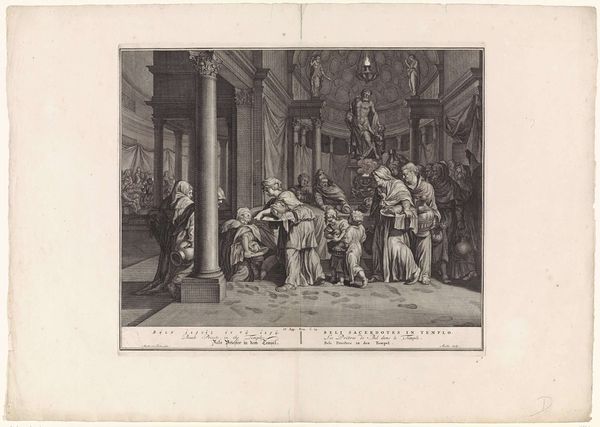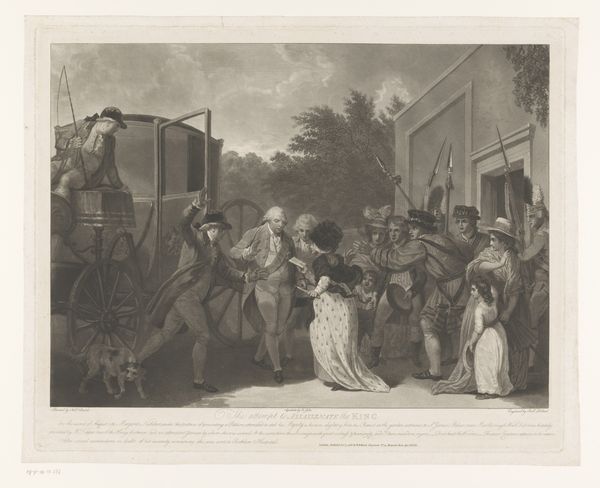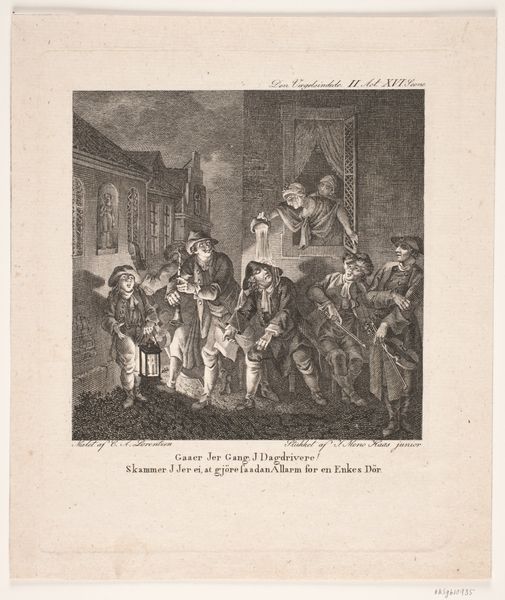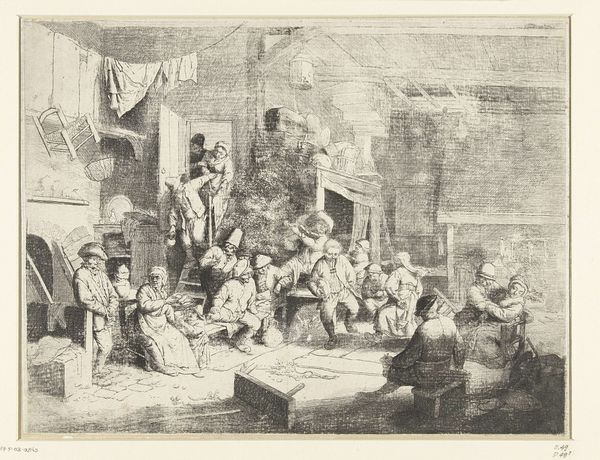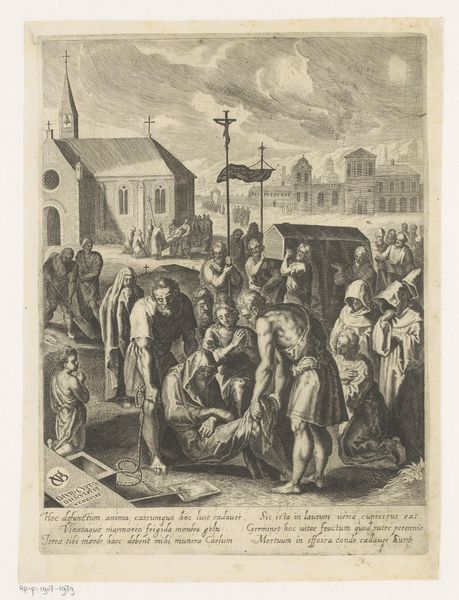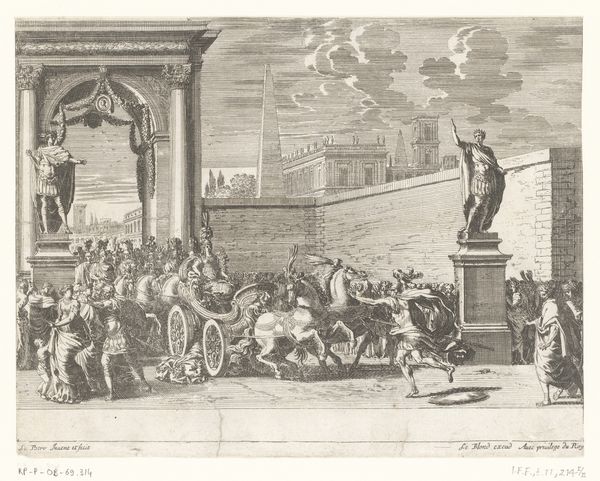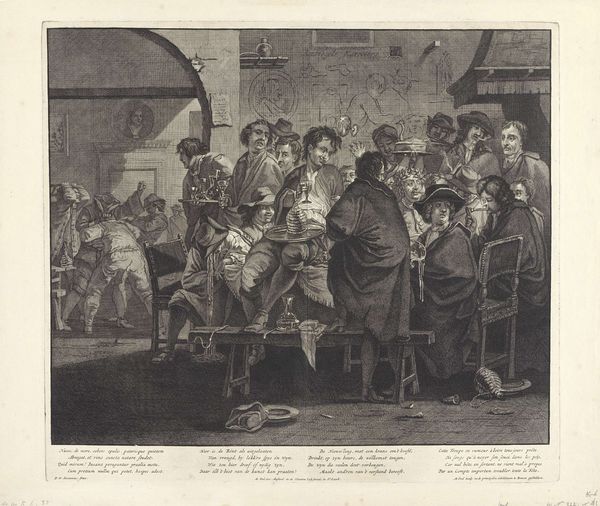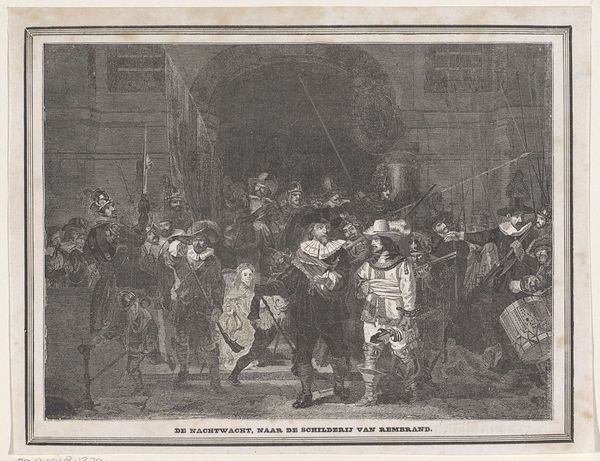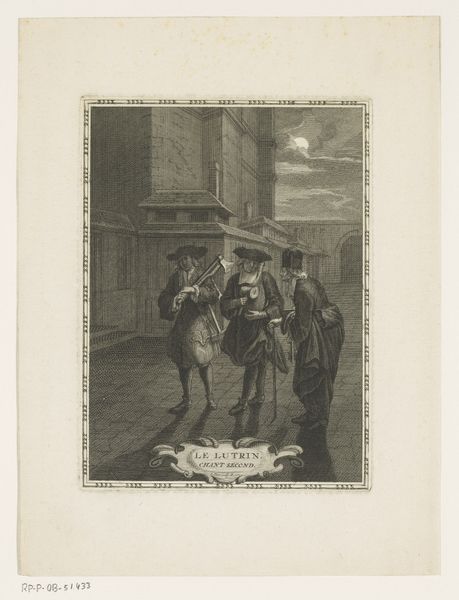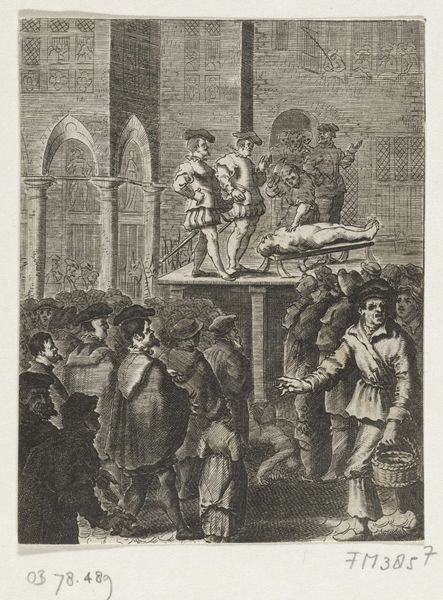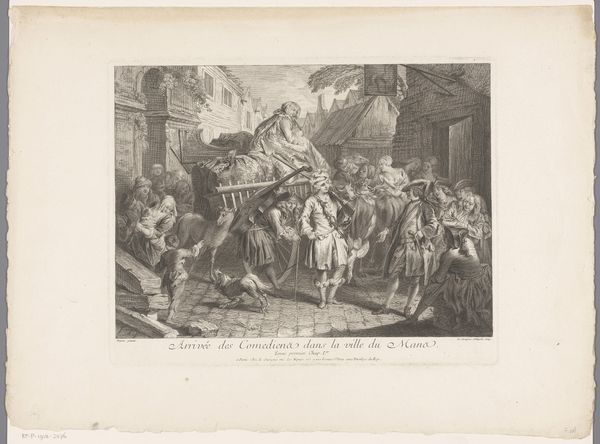
print, engraving
#
narrative-art
# print
#
old engraving style
#
cityscape
#
genre-painting
#
history-painting
#
engraving
Dimensions: height 298 mm, width 378 mm
Copyright: Rijks Museum: Open Domain
Curator: The work before us, made around 1850, is entitled "Wie kon lopen vertrok te voet, wie dat niet meer kon viel", an engraving by Tieleman Cato Bruining. It presents a bustling city scene at night. Editor: It's striking how the light and shadow carve out the figures, almost like a theatrical tableau. The crisp detail feels somewhat grim despite all the activity depicted. Curator: Exactly. The cityscape behind, shrouded in darkness, certainly hints at something unsettling, and there's a strong narrative element that captures the essence of genre painting. Editor: It really pushes the narrative to the forefront with the title displayed prominently, shifting our reading to history painting even through the details of each figure give the sense of it being a genre painting. What are your thoughts about this piece echoing through time? Curator: Consider the expressions. This revelry spills from some event as bodies teeter toward a horse-drawn carriage. A servant holding a candle, like a flame of truth in a world of drunken disarray, is especially striking. It reads almost like a dark satire of privilege. The theme of "those who can walk leave on foot, those who can’t fall" echoes across societies in its portrayal of inequality and decadence. The details show that those leaving have indulged until they can barely function, and it hints at larger themes, that this society cannot keep going in this manner. Editor: And formally, I note how the composition directs the eye diagonally. The figures ascending the steps on the left lead the eye toward the carriage on the right, mirroring the flow of people and drawing us into the scene's apparent disorder. Curator: And while this "old engraving style" could feel like a scene from long ago, there are similar parallels one can find within modern settings, if we look deep enough. I feel there's an intrinsic link, still present today. Editor: Indeed. By meticulously crafting the tonal values, Bruining transforms a common occurrence into a potent reflection on societal decline, a visual philosophy open to continued interpretation.
Comments
No comments
Be the first to comment and join the conversation on the ultimate creative platform.
